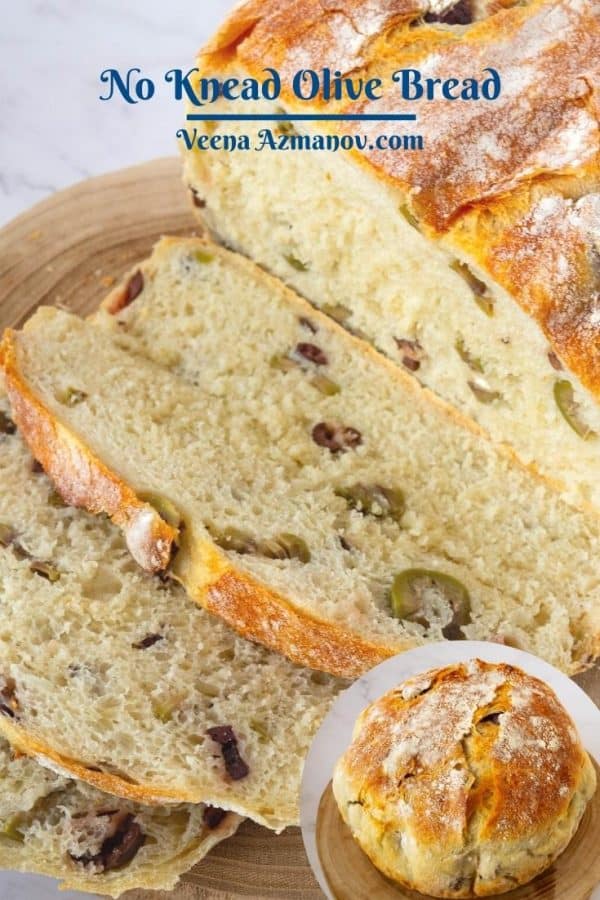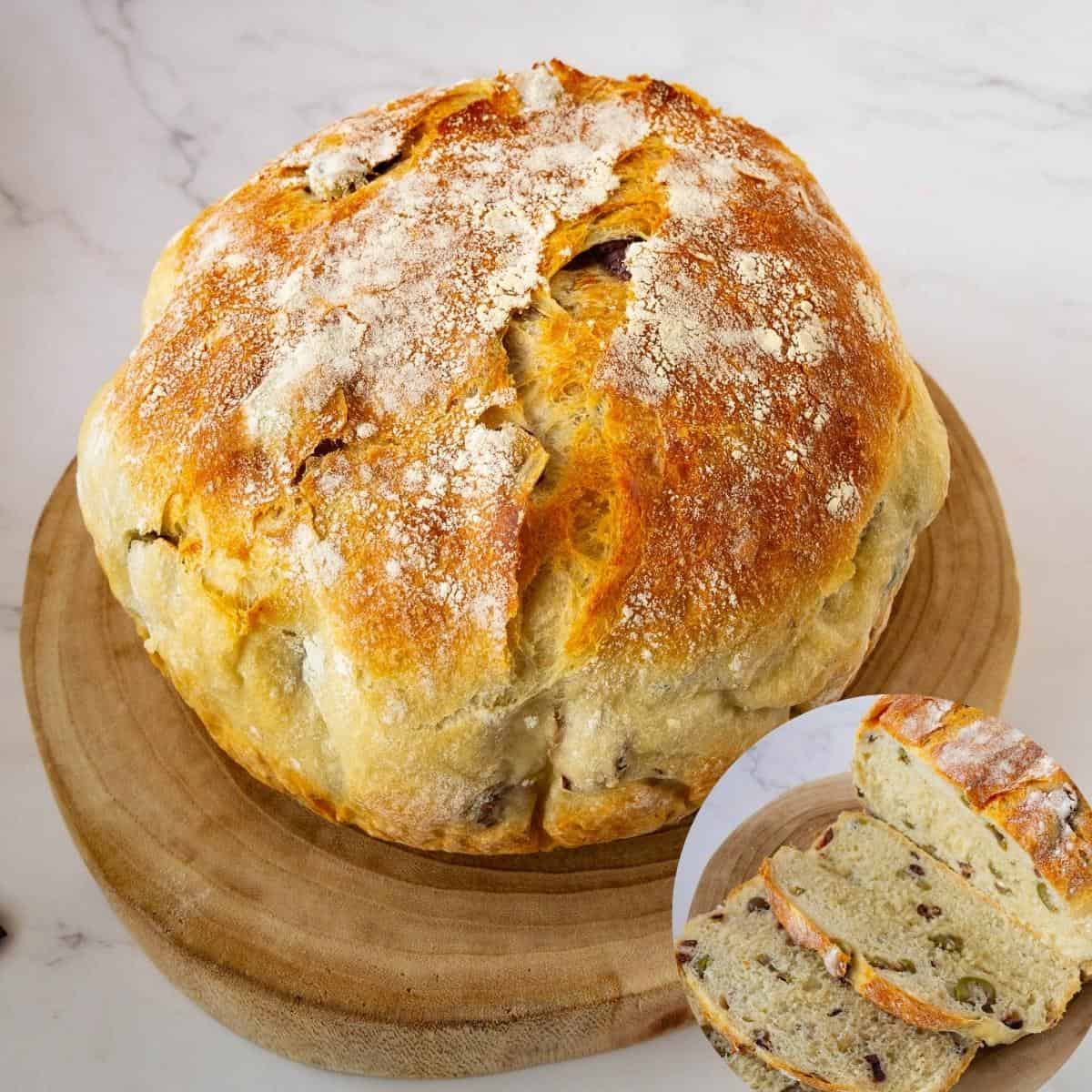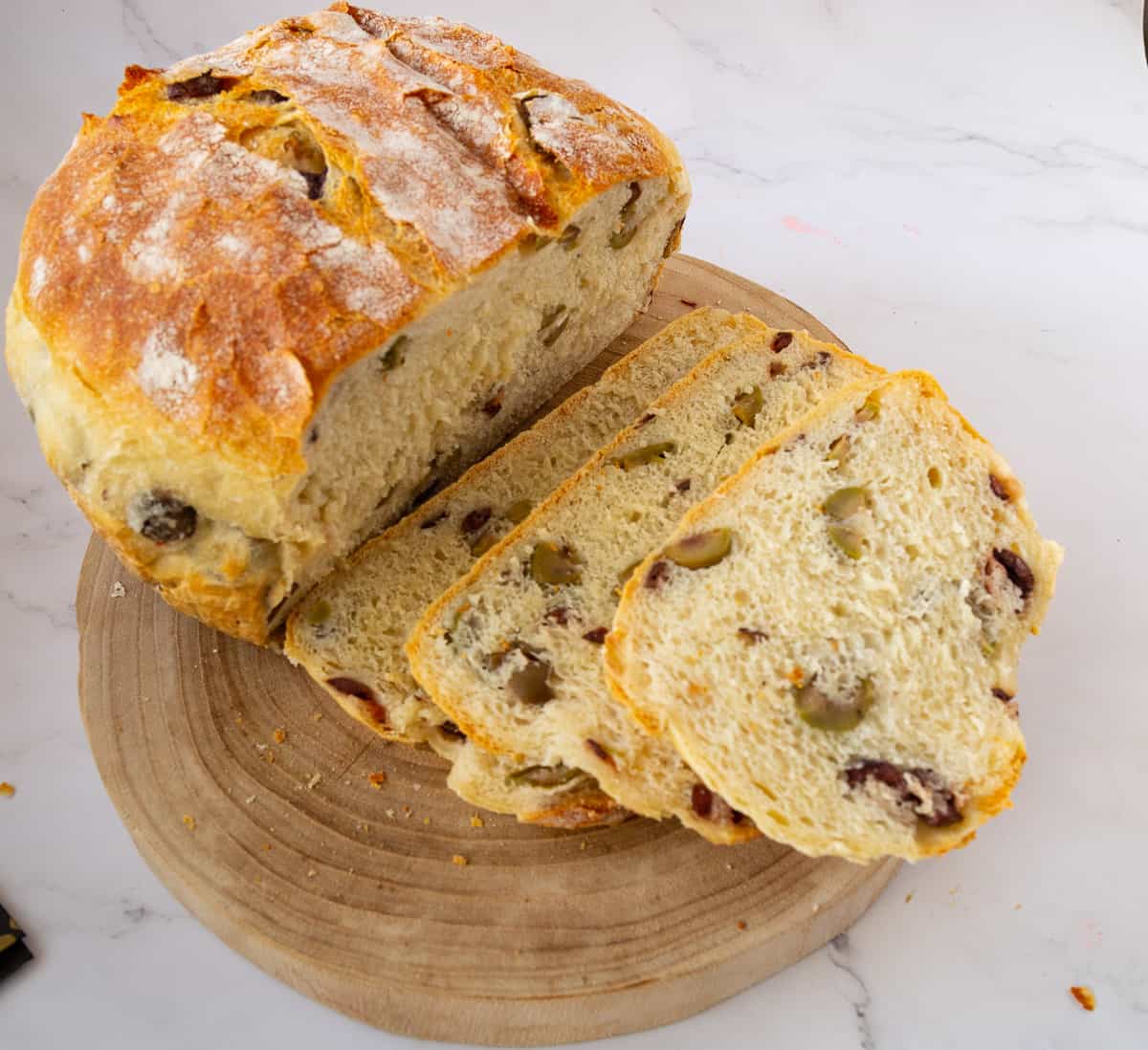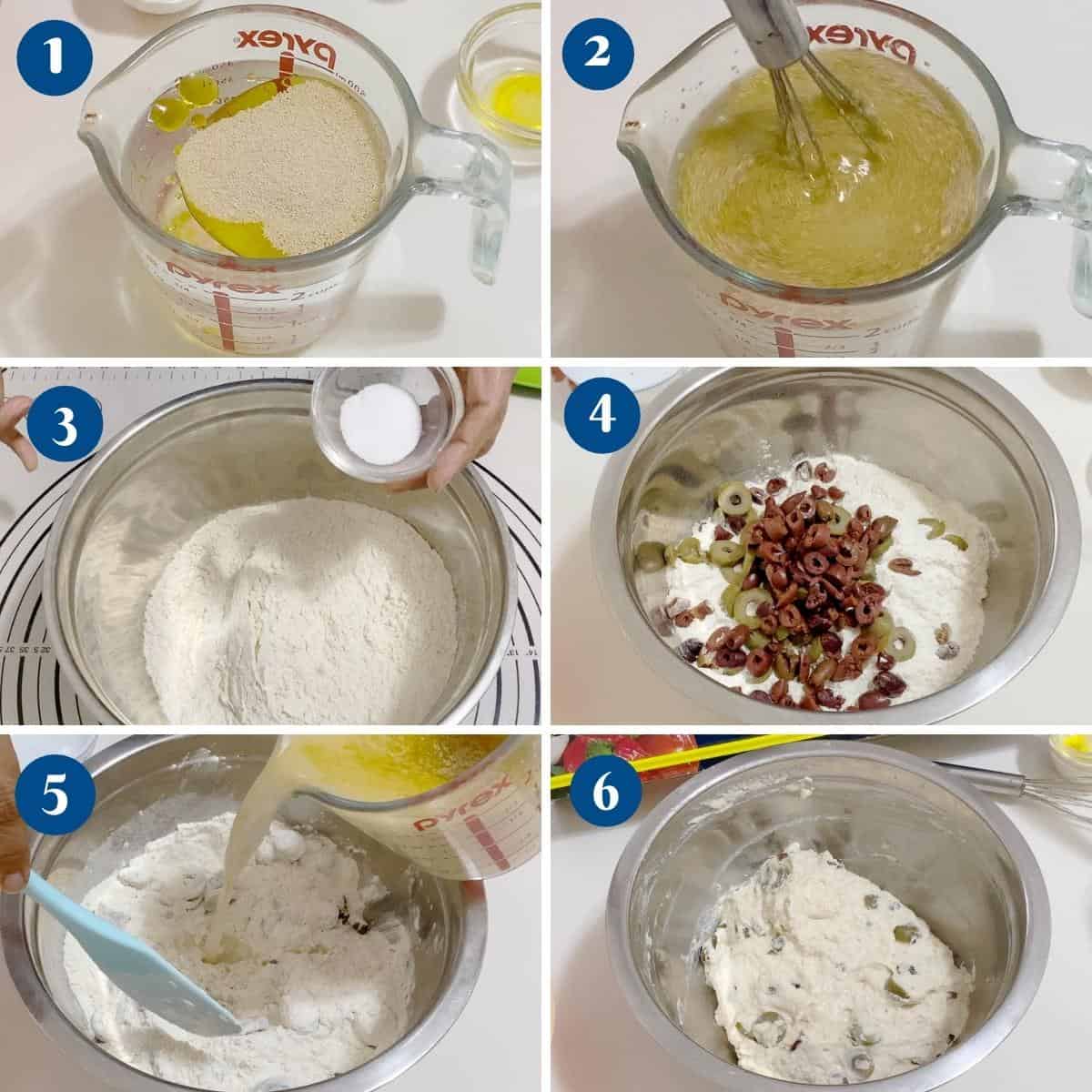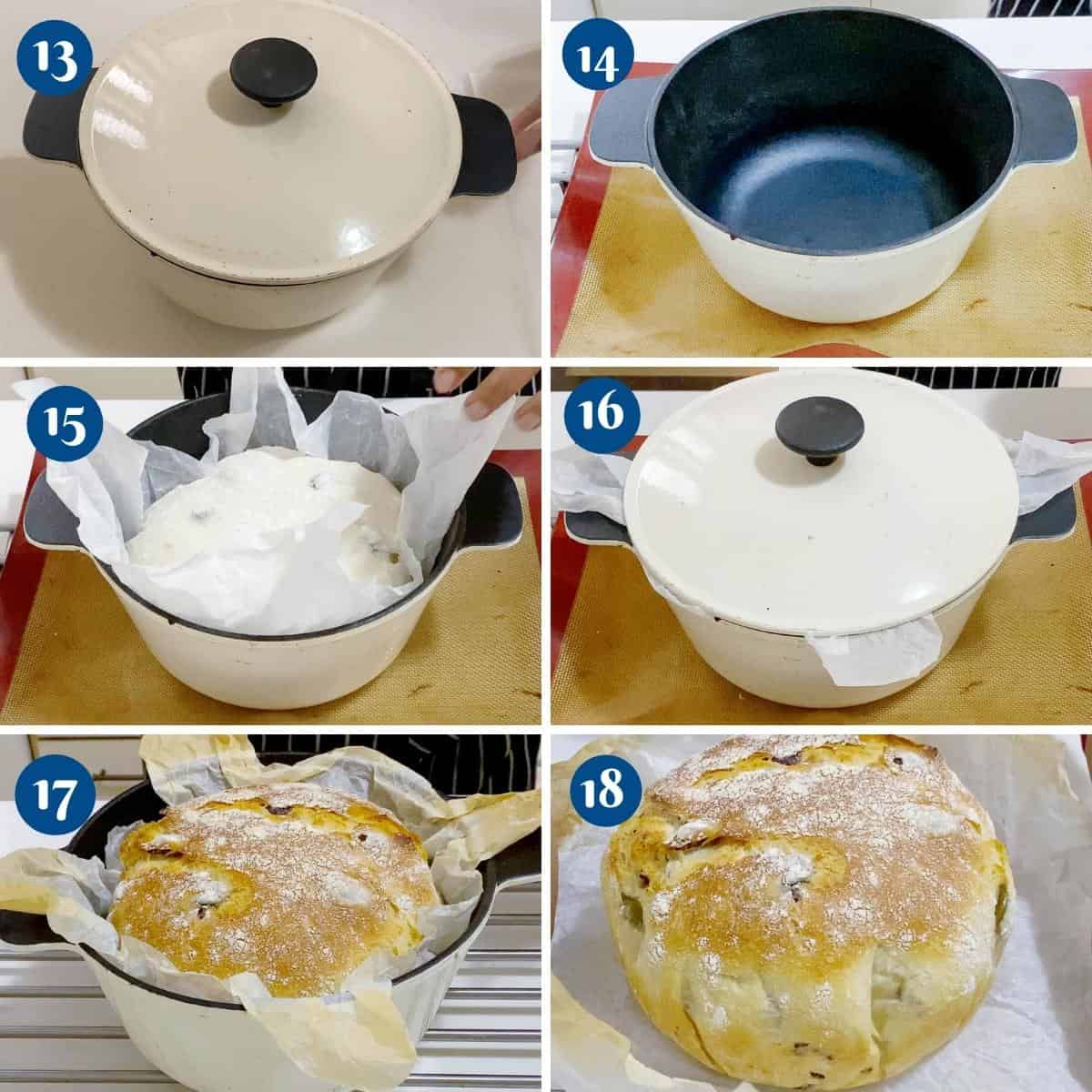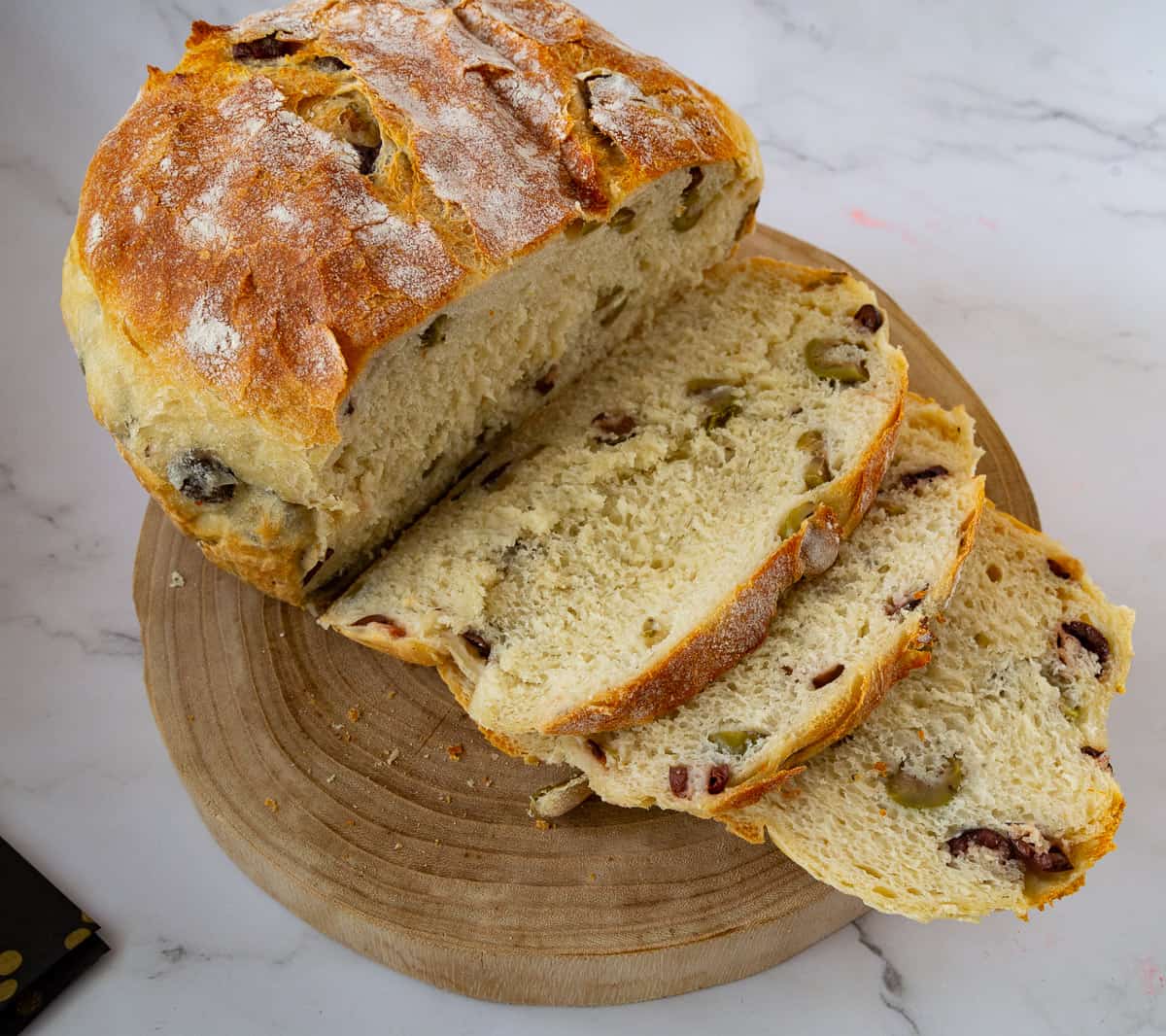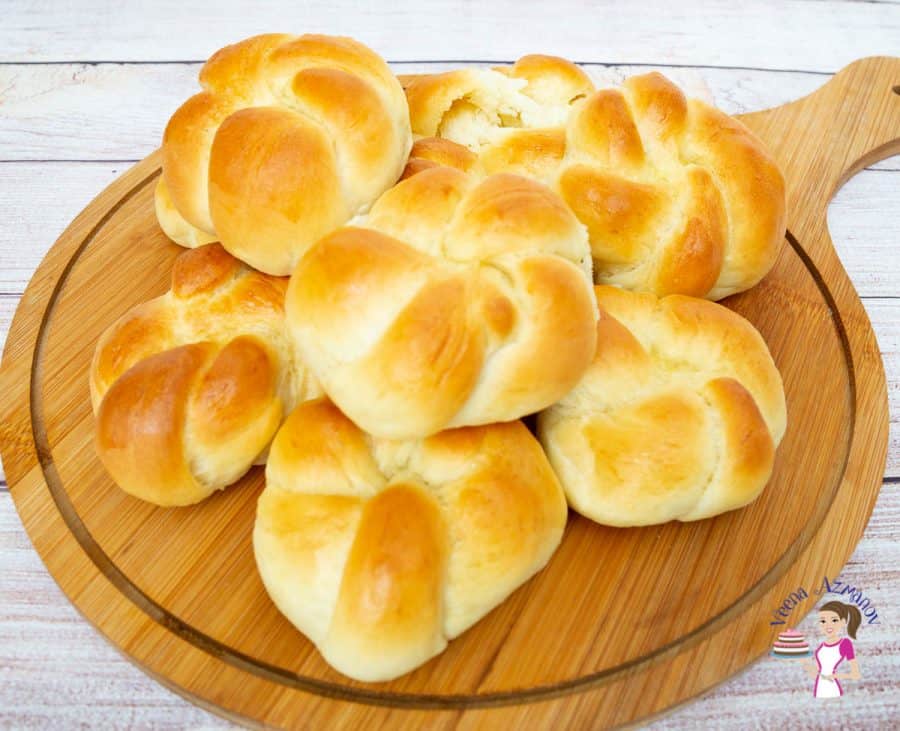No-knead bread is a game-changer for home bakers, offering a simple and foolproof way to achieve bakery-quality bread without the labor of kneading. The magic lies in its long fermentation process, where time does the work instead of your hands. With just four basic ingredients—flour, water, salt, and yeast—this bread develops a deeply flavorful crumb and an irresistible crispy crust. The dough is left to rise slowly over several hours, allowing the yeast to naturally develop complex flavors and a chewy texture. For a Mediterranean twist, adding olives to the dough takes this bread to a whole new level. The olives infuse the bread with bursts of briny, salty goodness, enhancing the rustic flavor. Use pitted Kalamata or green olives for the best results, and fold them into the dough just before the final rise. The result is a beautifully textured loaf, perfect for serving alongside olive oil, feta cheese, or as an accompaniment to soups and salads. The olive-studded no-knead bread brings a slice of the Mediterranean to your table, making it both a delicious and visually appealing addition to any meal.
Why make this bread?
Firstly, it’s a no-knead bread, which means it takes as little as 5 minutes to make the dough. Secondly, the recipe is simple and easy with ingredients you already have in your pantry, plus olives. The process is as simple as combine the dry ingredients in one bowl and liquid ingredinets in another bowl. Combine the two together, rise, then bake in a crock pot. No haste – you can let the dough proof for as little as four hours up to 18 hours so no need to rush. In fact, the longer you leave the dough the more the flavor of yeast is developed. In addition, the dough is very forgiving. Soft, wet, and sticky, and yet that is what gives it a beautiful crust on the outside and a soft moist bread on the inside. Also, the process for this bread cannot be any more simple than this. Prepare the dough – 5 minutes Place in the fridge for 4 to 6 hours Bake – 45 minutes
Ingredients and substitutes
Flour – I have always used all-purpose flour for no-knead bread in the past but bread flour is perfect for this bread. It has more gluten, which makes the bread stronger, chewier and that’s what we want! Water – It is very important to use warm water, not cold or hot water. The cold water will not revive the yeast and hot water will kill the yeast. So, the water must be about 110F. Instant dry yeast – I like to use instant dry because I’ve always had great success with it. And yet, you can also use 1 1/4 tsp active dry yeast or 16 grams of fresh or baker’s yeast. Also, activating the yeast is unnecessary, but I like to take the guesswork out and make sure my dough will rise. Sugar – If you prefer, you can substitute sugar with 2 tbsp of honey. Olive oil – A good source of food for the yeast and also adds a nice flavor as well. Optional ingredients – There is so much more you can add to this bread. Try 1/2 tsp of garlic powder or a few tablespoons of roast garlic. A teaspoon of dried herbs such as oregano, rosemary, and thyme.
Step-by-step: Easy Olive Bread Recipe
Dry ingredients: In a bowl, combine flour and salt. Add the chopped olives – combine well and set aside. Wet ingredients: In a measuring cup, measure the warm water, add olive oil, sugar, and yeast. Combine well.
Combine wet and dry ingredients: Add the yeast mixture to the flour mixture. Mix well with a wooden spoon or spatula, ensuring no dry flour is left on the bottom. This is a very wet dough, so don’t try touching it with your hand. Rise: Cover with a clean kitchen cloth or plastic wrap. Leave it on the countertop for an hour. Then, place in the fridge for 4 to 6 hours – up to 12 hours.
Preheat: Remove the dough from the fridge and preheat the oven to 390°F / 200°C / Gas Mark 6. Place a 6-quart cast-iron or Dutch oven with its lid in the oven for 30 minutes. Shape: Dust your work surface generously with flour. Transfer the dough to the floured surface. It is best to use a dough scraper or floured hands to shape the dough into a ball.
Rest: Place the dough onto the scrunched-up parchment paper dusted with flour. Place an inverted bowl over it while you wait for the Dutch oven pan to heat up. Bake: Pick the dough up by the parchment and lower it into the preheated Dutch oven. Bake for 20 minutes covered, then remove the lid and continue baking for another 20 minutes uncovered or until bursting and golden on top. This will take about 40 to 45 minutes. Rest: Carefully remove the pan from the oven. Transfer the bread onto a wire rack to prevent it from getting soggy on the bottom. Let cool for at least 20 minutes before you slice into it.
Tips for success
This dough is a high-hydration bread, which means it has to be soft, wet, and sticky. Don’t add more flour. Use warm water – not hot, not cold. Cold water will not revive the yeast; hot water will kill the yeast. Read here – baking with yeast a beginner’s guide. Flavor ideas—You can add so many ingredients to flavor this bread, from chopped rosemary and thyme to olives, sun-dried tomatoes, caramelized onions, roasted garlic, parmesan, cinnamon, and pumpkin spice. Do not try to knead it. It has too much water, and trying to knead it will be not only difficult but also not worth the effort. Don’t rush the proofing. We use less yeast in this bread, so the proofing is slow. However, it also helps develop flavor and structure. You can leave this in the fridge for up to 24 hours. When baking, the top of the bread will have a burst effect because steam is trying to escape. If you do not like the burst effect, you can score the bread on top before baking. Mark an X or just two slashes. This will direct steam to come out from those designated vents you created. Pizza stone—The Dutch oven heats the bread at a very high temperature, which gives it that nice rise. At the same time, because we use the lid, it creates steam inside the pan. This steam settles on the bread, baking into a nice hard crust.Alternatively, you can bake this without a Dutch oven directly on a pizza stone and place a bowl of water at the back of the oven. This will give you a good crust, but the bread spreads, giving you a shorter loaf like my no-knead beer bread. Remove the bread from the tray as soon as it is out of the oven. This will prevent the bread from getting soggy on the bottom. Do not cut the bread until at least 20 minutes after it is out of the oven. This will prevent moisture in the form of steam from escaping, resulting in dry bread. Do not cover or wrap the bread while it is warm. The steam will soften the crust. Do not store bread in the fridge, as it will dry. Leave it on the counter at room temperature for 2 to 3 days. This bread is great for freezing for up to 3 months. You can freeze slices instead of the whole loaf.
Troubleshooting
Has the bread sunk at the bottom? The pan in the oven must be very hot, which is why I asked you to let it heat for a minimum of 30 minutes. If the dough is put in a pan that’s not hot enough, it will sink. Dense dough? The dough needs to be soft, wet, and sticky. The low yeast, high water content, and slow rise help develop gluten. If you add too much flour, the dough will become dense. Why did the dough not rise after 6 hours? You must use warm water or room-temperature water. Warm water will revive the yeast, while hot water will kill it, and the dough will not rise. If the water is at the correct temperature, check the yeast; perhaps it is past its expiration date. Whole wheat bread—Unlike whole-wheat flour, white flour has gluten, which makes this bread light and airy. You can replace half the white flour with whole wheat, as we did in our no-knead whole wheat olive bread. All whole wheat will need more yeast, and denser bread will be made if it is not kneaded.
No-Knead Knotted Rolls No-Knead Pizza Dough and No-Knead flatbread recipe No-Knead Bread Without a Dutch Oven See all no-knead recipes
Frequently asked questions
Easy Soft Flatbread Without Yeast (no-knead) No-Knead Sandwich Bread Crusty No-Knead Bread No-Knead Beer Bread – (yeast-risen)
Did you LIKE this recipe? Save it for later. You can find my recipes on Pinterest. Follow me on Facebook, Twitter, and Instagram.Subscribe, and I’ll send you new recipes right to your inbox. Thank you for sharing - Save for later

